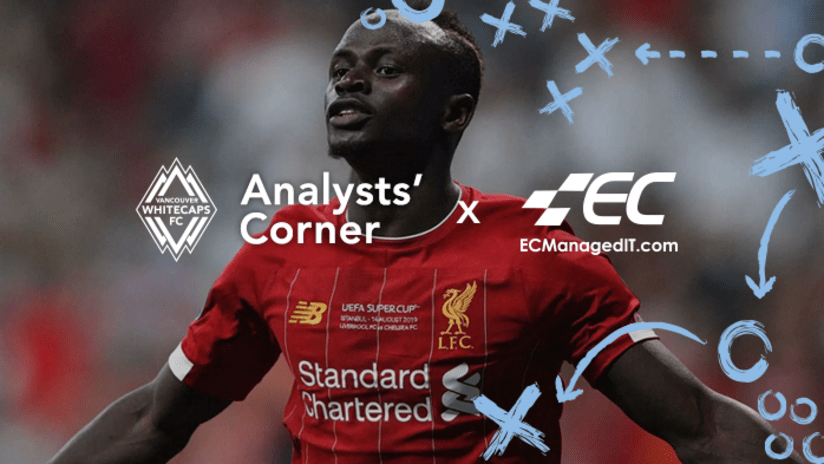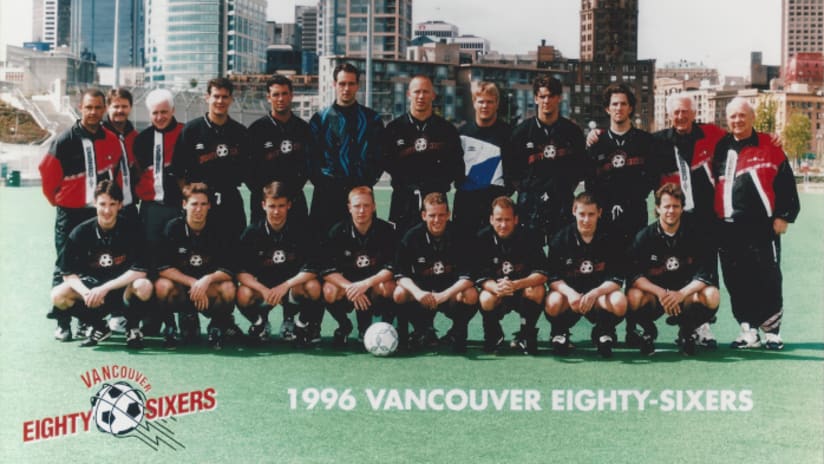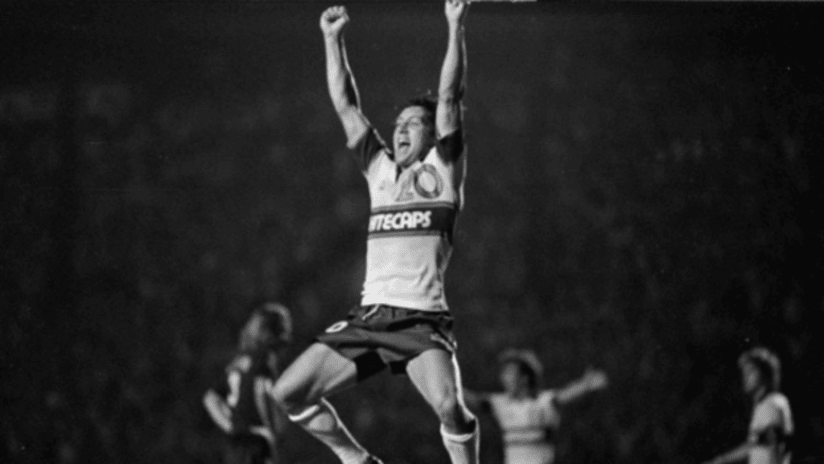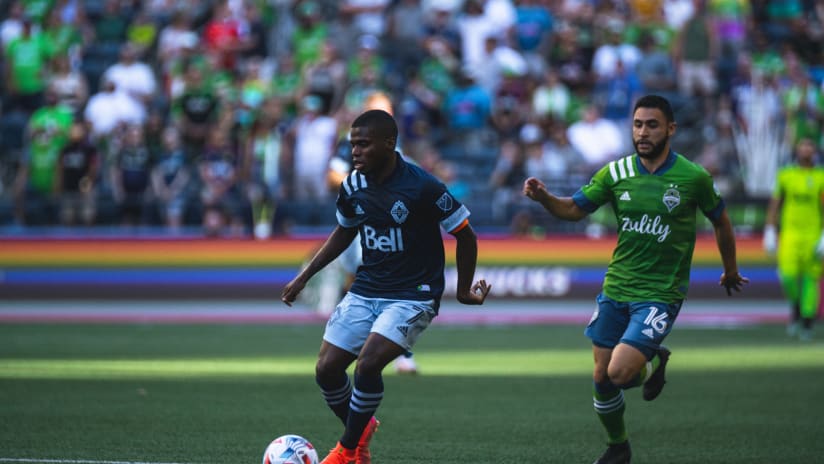Sometimes, there’s more to the beautiful game than meets the eye. Delve deeper with Analysts’ Corner, presented by EC Managed IT, a new blog featuring tactical insights from Whitecaps FC video analyst coach Andrew Peat and assistant video analyst Luke Summers.
Hi everyone, it’s Andy Peat here. I’m the video analyst coach here at Vancouver Whitecaps FC and I’m really excited to talk football with all of you!
Let’s start off with shedding some light on what it means to provide depth, movement behind, and exploiting space in behind. We’ll get into why it’s important for players and teams to do it and the options that are created for the attacking team as a result. This is a concept in which the attacking player makes a movement/run behind the opposition team’s back line regardless of the shape, number of defenders, or moment in the game.
The intent of the movement is twofold:
1. To get on the ball behind the opposing backline to progress play and exploit this space
2. To affect the decision-making of the defensive players and allow another player to get on the ball
Why create depth?
The reason why players need to create depth is to stretch the field and make it difficult for defenders. If all attacking players looked to receive the ball in front of the opposition team’s back line, it allows the opposing team to stay compact and keep everything within their sightlines. When players make movements behind, it stretches the field and allows progression of play.
Below, you’ll find four videos examples in which this was successful.
With Liverpool and Atletico Madrid, you see this executed through a through-ball.
With Fiorentina, it’s a pass played down the side.
And with Whitecaps FC, it’s a ball over the top.
In each case, the pass could not be made without the movement of the attacking player.
The player on the ball is important in seeing what players in the front line are doing to supply the movement. When the player’s head comes up, there’s movement behind. This means that the relationship between the player passing the ball and the player making the movement is an interrelated trigger.
In each of the video examples, you’ll also see that the attacking player making the movement – Sadio Mane, Alvaro Morata, Federico Chiesa, and Lucas Cavallini – are making runs off the back shoulder of the defender. This type of run makes it impossible for the defender to see the ball and the movement at the same time. As a result, the attacking player is typically able to expose the defender’s focus on the ball and exploit the space behind.
Creating depth is not limited to the forwards. It can also be created by wingers, wide midfielders, centre midfielders, and fullbacks. This depends entirely on the team’s tactical strategy, player rotations, and ultimately what the players decide to do on the field. The video examples above illustrate the forwards executing this movement.
One important point to note: often players will make movements behind and not receive the ball. Sometimes the runs are defended well and cover is provided. However, these runs are still necessary and sacrificial in a sense, as they force the opposing team’s players to make a decision on whether or not to track the run and how far to step out, for example.
And ultimately, this will create space, another passing option, and allow the attacking team to progress. Then, the next job for the player who made the initial run is to make a secondary movement and adjust to the new context and situation, as you can see in the example below.
Another important point: depth isn’t a direct approach or style of play. Rather, it is a concept that relates to a purposeful movement a team uses to create space – regardless of their system.
Certainly, it is a crucial component to any team’s attack.




